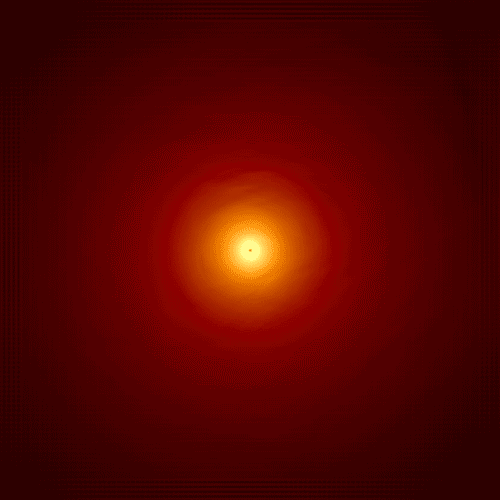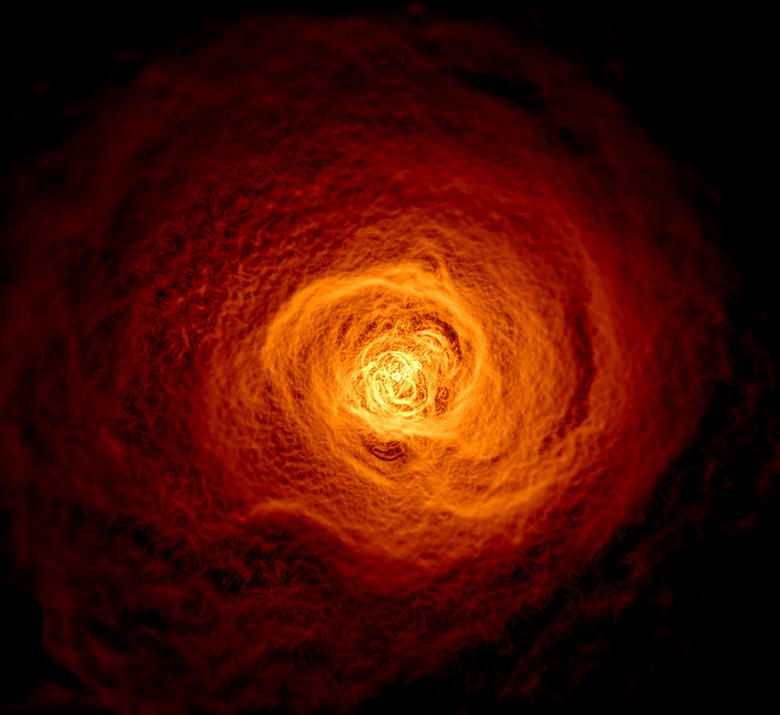A Giant Wave in Perseus

Credit: Credit: John ZuHone/Harvard-Smithsonian Center for Astrophysics.
Combining data from NASA’s Chandra X-ray Observatory with radio observations and computer simulations, scientists have found a vast wave of hot gas in the Perseus galaxy cluster. Spanning some 200,000 light years, the wave is about twice the size of the Milky Way galaxy.
Researchers think the wave formed billions of years ago after a small galaxy cluster grazed Perseus and caused its vast supply of gas to slosh around in an enormous volume of space.
Galaxy clusters are the largest structures bound by gravity in the universe today. Some 11 million light years across and located about 240 million light years away, the Perseus galaxy cluster is named after its host constellation. Like all galaxy clusters, most of its observable matter takes the form of a pervasive gas averaging tens of millions of degrees — so hot it only glows in X-rays.
